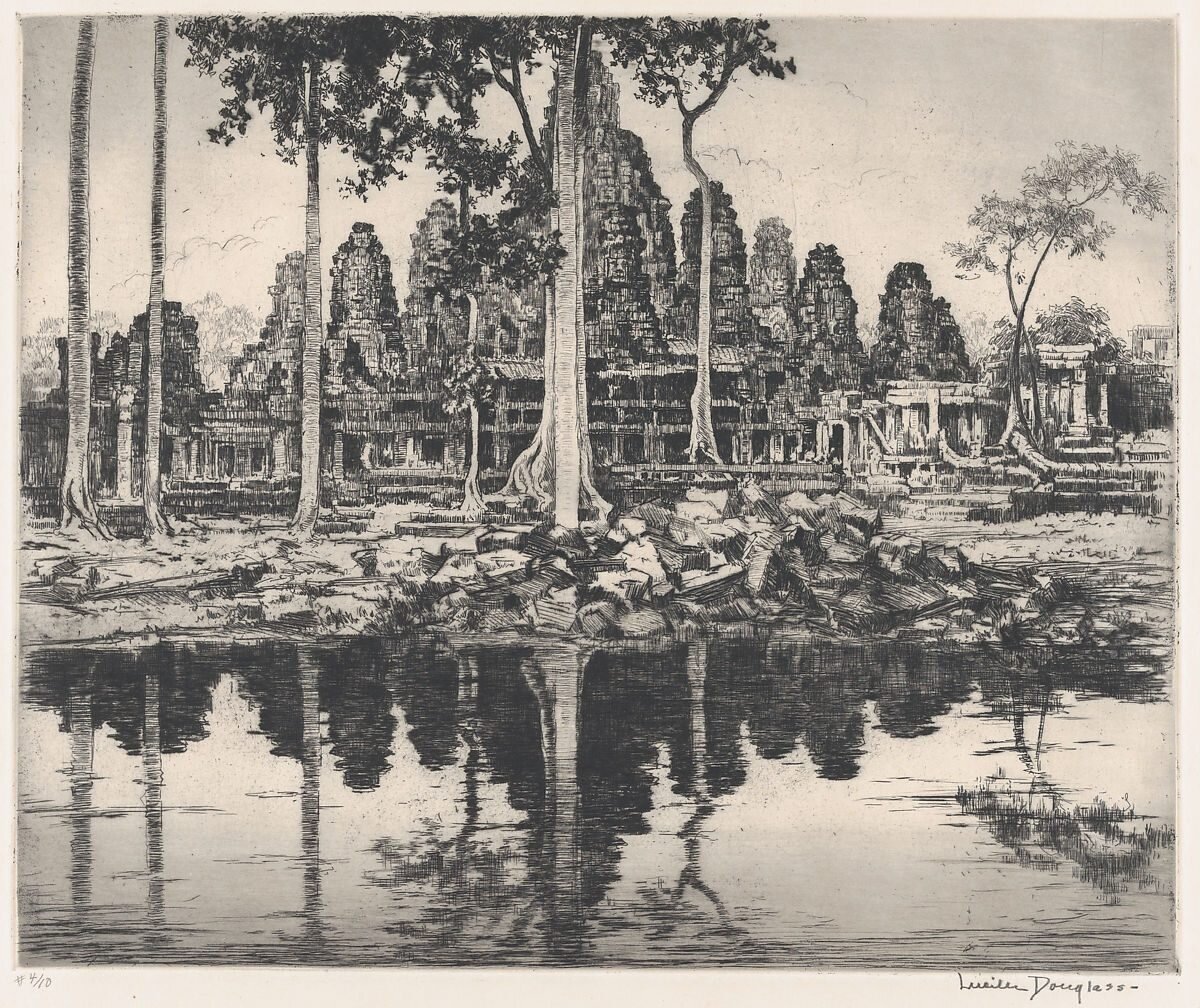An American Woman Artist in Angkor : Lucille Sinclair Douglass
by Lucille Sinclair Douglass
The only woman visual artist whose depictions of Angkor are kept at New York Metropolitan Museum.

Published: 1927
Author: Lucille Sinclair Douglass
Source: MET online collection.
When she discovered Angkor in 1927 with famous author Helen Churchill Candee, American artist Lucille Sinclair Douglass wrote in her Journal: “Angkor is one of the really great experiences of my life — a more intellectual than emotional experience — not that it left me cold, quite the contrary — but it was more of an uplift — an inspiration (…) Our stay was all too short — Angkor Wat alone requires years of study — living with understanding — a few days seems but a mockery (…) I have never had a place affect me so peculiarly.”
The year after, however, Lucille Douglass was back to Angkor and was able to spend five months on the site. The resulting artwork was first exhibited in April 1928 in Washington, D.C., under the auspices of the French ambassador, and then at the French Colonial Exhibition in Paris in 1931.
Holding Angkor as much more than an exotic artistic subject, Lucille Douglass gave documented lectures on the Khmer temple complex at the Metropolitan Museum in New York, the School of Oriental Studies at the University of London, the Royal Asiatic Society, and Oxford University. On January 10, 1930, she gave a talk at the National Geographic Society entitled “Angkor, A Royal Passion.”
All four artworks depicted in this slideshow are etchings created ca. 1927 and belong to The MET Collection.
More about Lucille Douglass can be found in Women Artists of Birmingham, 1890 – 1950 (Birmingham Historical Society, 2004) by Vicki Leigh Ingham.
Tags: visual arts, 1920s, women travelers, American explorers
About the Photographer

Lucille Sinclair Douglass
American artist Lucille Sinclair Douglass (1878, Tuskegee, Alabama –1935, Andover, Massachusetts) graduated in 1895 from the Alabama Conference Female College, where her mother taught art. In 1899, she moved to Birmingham, where she made a living as both an artist and an art teacher. In 1907 she and seven other female artists — Carrie Hill, Alice Rumph, Della Dryer, Hannah Elliott, Caroline Lovell, Carrie Montgomery, and Willie McLaughlin — formed the Birmingham Art Club.
From 1909 till 1913, she lived in Paris, studying painting and drawing with Lucien Simon, Emile-René Ménard (1862−1930) and Alexander Robinson, and held two exhibits of her paintings there in 1911. After returning to America, she joined the Methodist Missionary Society and, in 1920, was sent to Shanghai to oversee a workshop of Chinese female artists.
While in China, Lucille Douglass became close friends with two female writers whose books she would eventually illustrate, Florence Wheelock Ayscough and Helen Churchill Candee. With the latter, she visited from November 1926 till January 1927 Indochina, Siam, Java and Bali. It was also on this journey that Douglass first visited Angkor (Candee had been there before and had published the book Angkor the Magnificent in 1924).
Angkor was a revelation for the fifty-two-year old artist and, after illustrating Candee’s New Journeys In Old Asia with twenty-one etchings, she gave countless conferences on the capital city of the ancient Khmer Empire [see: “Angkor: A Royal Romance”.]
Back to New York, Lucille Douglass joined the “Floating University” from November 1928 until May 1929, teaching art on the ship President Wilson during a world cruise that included Southeast Asia.
After a long illness, Lucille Douglass died on September 26, 1935, in the home of a friend in Andover, Massachusetts. Her remains were cremated and, in the following year, flown to Angkor where they were spread around a “majestic mango tree.”
Read a complete biography by Stephen F. Goldfarb here.




